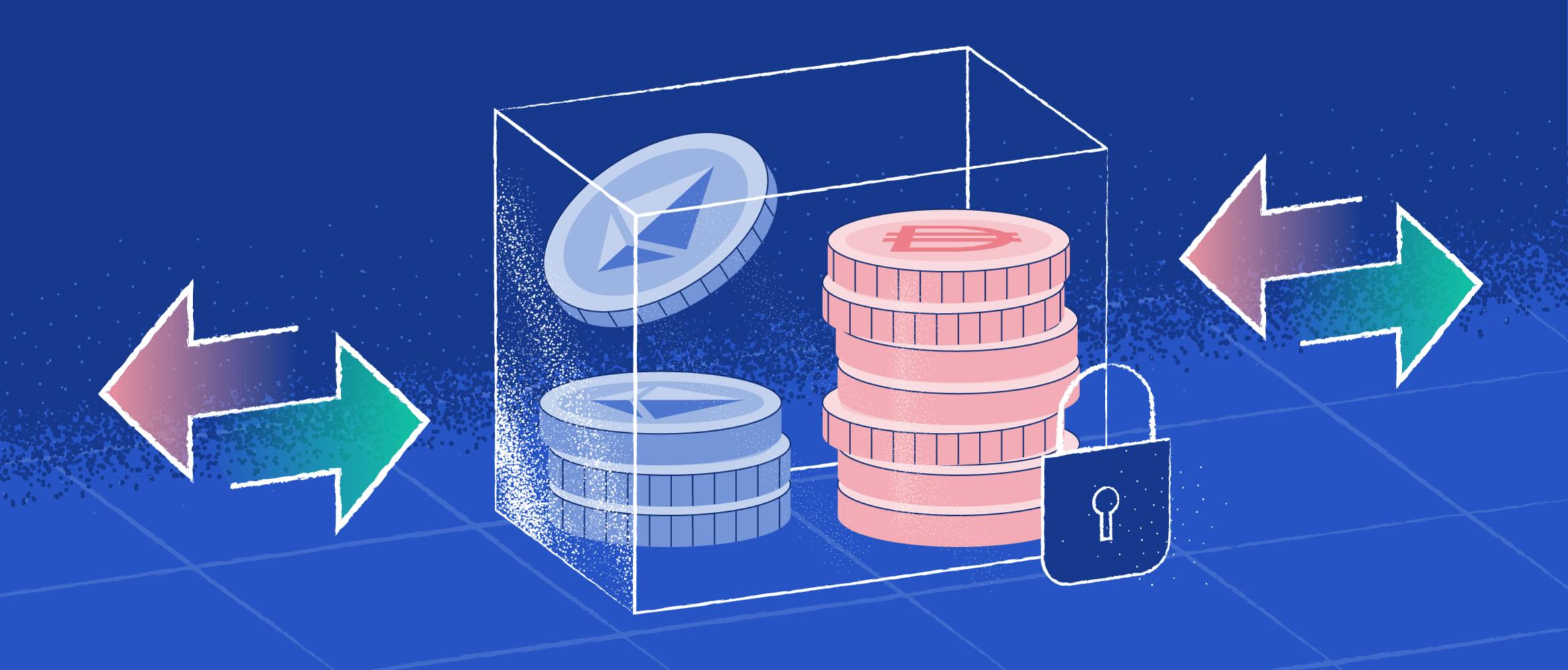
- All
- Tools
- Analytics
- Technical Analysis
- Trading
- Blockchain
- DeFi
- Guides
- Company News
- Educational
- Opinion
- Price Predictions
- Market News
- News
- Trading cases
- Practical guides
- Exchanges
- Trading signals
- Cryptocurrency
- Crypto bots
- Other
Become a crypto master
Learn everything about crypto,
trading and bots

Impermanent Loss Explained
Every so often, the cryptocurrency landscape witnesses a phenomenon that rapidly ascends to prominence, only to potentially wane with similar swiftness. The fervor of ICOs in 2017 transformed the crypto market into a bustling financial hub. This was followed by the surge of IEOs, and as we navigate 2023, DeFi projects are the ones drawing attention with their lucrative returns.
For those immersed in DeFi or engaged in related projects, the term "impermanent loss" might ring a bell. But what exactly does impermanent loss in the crypto realm entail? Dive into this comprehensive article as we unravel the intricacies of impermanent loss within the ever-evolving world of decentralized finance (DeFi).
Start Trading on 3Commas Today
Get full access to all 3Commas trading tools with free trial period

Understanding impermanent loss
In 2023, the DeFi landscape has evolved considerably, with platforms like Uniswap, SushiSwap, and PancakeSwap emerging as dominant players. These platforms democratize finance, enabling virtually anyone to step into the shoes of a market maker. By pooling their assets into shared liquidity reservoirs, individuals can earn commissions. The beauty of this system lies in its simplicity: it offers a pathway to passive income without demanding specialized knowledge, hefty investments, or advanced equipment.
However, venturing into the DeFi space isn't devoid of potential pitfalls. One notable concern is "Impermanent Loss" — a transient financial setback that liquidity providers on decentralized platforms might grapple with. This stems from the occasional disparity in crypto asset values across decentralized exchanges (DEXs) and their centralized counterparts (CEXs). To illustrate, while BTC might be trading at $60,000 on UniSwap, it could command a $61,000 price tag on Binance.
Let's contextualize this with a real-world analogy. Imagine purchasing an apartment in a quaint town for $400,000 in 2020. That same year, a Bitcoin was valued at $40,000. Essentially, your apartment's worth could have fetched you ten Bitcoins. Fast forward to 2021, those ten Bitcoins would have been worth $630,000. This indicates an "impermanent loss" of $230,000. While you haven't experienced a tangible loss, you've missed out on a potential gain of that amount.
Over time, prices tend to find equilibrium. Nonetheless, every scenario has its nuances. Should a market-maker opt for an untimely fund withdrawal amidst volatile market conditions, they might incur losses.
Impermanence definition for dummies
Impermanent loss occurs when you provide liquidity to the liquidity pool, and the price of your deposited assets differs compared to when you deposited them. The greater this change, the more you are exposed to an impermanent loss. In this case, the loss means less value in dollars at the time of withdrawal than at the time of deposit.
Pools containing assets that remain in a relatively small price range will be less prone to impermanent losses. For example, stablecoins or different versions of coins will remain in a rather limited price range. In this case, there is less risk of volatile losses for liquidity providers (LPs).
So why are liquidity providers still providing liquidity if they are subject to potential losses?
Uniswap charges 0.3% on every trade that goes directly to liquidity providers. If a given pool has a high volume of trades, it may be profitable to provide liquidity, even if the pool is highly exposed to volatile losses. However, this depends on the protocol, specific pool, deposited assets, and even broader market conditions.
Trading commissions can still counteract impermanent losses. Even pools on Uniswap, which are very prone to volatile losses, can be profitable thanks to trading commissions and AMM mechanisms.
What is AMM?
According to a definition, AMMs are autonomous, decentralized exchanges managed by software. A basic algorithm controls the prices of the assets stored in AMM liquidity pools. Liquidity is provided by liquidity providers (LPs), who usually contribute equal amounts of two assets per pool. For example, ETH and DAI.
AMM was first described on Reddit by Ethereum platform founder Vitalik Buterin — as a way to simplify market making on smart contracts. A year later, in 2017, the first AMM Bancor appeared, and another year later, Uniswap appeared, which is now the market leader.
Using automated exchanges, investors can deposit their coins into liquidity pools and, in return, receive rewards (in the form of commissions charged to traders), which are calculated in proportion to their investment shares. Typically, LPs are also rewarded with project tokens, which entitle them to vote on key protocol changes.
Thus, liquidity providers are interested in placing their assets in AMM because they are rewarded in commissions from traders and project tokens. However, they may face an Impermanent loss, which is a significant risk to their income.
Why does impermanent loss occur?
People often misunderstand Impermanent loss (IL). Commissions, spreads, slippage, even block time are usually attached to its calculations. But none of this affects the IL in any way. The IL is a formula with a known result, which does not depend on the above.
Impermanent loss is a price you pay by using one investment strategy instead of another. The difference between using a "constant proportion strategy" and a "buy and hold" strategy. However, IL assumes that you will only keep the assets in your wallet if you don't supply liquidity to the AMM. But this is an incorrect assumption. People can and will make a million investment decisions, make trades, etc.
If you calculate IL every time you make one decision instead of another, any action will carry IL technically. Imagine you bought a laptop for $10k back in 2019. If you purchased ETH instead, you would now have $40k. You have an Impermanent Loss of $30k
AMM protocols are governed by a mathematical algorithm that automatically balances the ratio of assets in the pool at the 50:50 level and thus determines their value. The pricing mechanism uses the formula: X*Y = K, where X and Y are two different assets, and K is a constant value, which must be the same before and after the transaction.
This algorithm allows the market to function autonomously, creates the possibility for arbitrage, but is also the cause of variable losses in DeFi. The fundamental cause of impermanent loss is a mismatch between the value of coins in the liquidity pool and the actual market situation.
How to estimate impermanent loss?
Impermanent losses occur when the value of one asset changes relative to another and result in an unrealized gain for the investor. But how big of a loss can be incurred compared to HODLing? (buy and hold) It all depends on how much the price has changed, meaning that the more price changes, the more your losses will be:
- 1.25x price change = 0.6% loss;
- 1.50x price change = 2.0% loss;
- 1.75x price change = 3.8% loss;
- 2x price change = 5.7% loss;
- 3x price change = 13.4% loss;
- 4 times price change = 20.0% loss;
- 5 times price change = 25.5% loss.
You can also use an impermanent loss calculator to understand what are the losses.
Suppose the liquidity pool has two digital assets ETH and DAI. To provide 50/50 liquidity to the pool, the LP must provide the pool of assets at equal value. For example, 1 ETH = 4,100 DAI. A user, for example, deposits 1 ETH and 4,100 DAI, and since the value of a DAI is fixed at $1, the investment is equal to $8,200.
Now let's imagine that this is 10% of the total pool. That is, Constant K = 10 ETH x 41000 DAI = 410,000. And after all the transactions in the pool, it must remain true.
As long as the total value of both tokens is the same, everything is stable. When the value of ETH begins to rise, arbitrage traders will come into play. They buy ETH out of the pool at a lower value than the market value until it compares to the outside price. The pool ratio must stay the same at 410,000.
If an investor who originally invested 1 ETH = 4,100 DAI, at some point withdraws funds, he will receive 0.5 ETH and 2,050 DAI. If the investor had preferred the HODL strategy to escrow, the value of his assets after the rise in the price of Etherium would have been more favorable, say $4,300.
The difference between $4,300 and $4,100 (0.5 ETH = 2050; 2050 DAI = 2050 USD) is impermanent loss.
Impermanent loss risks
In an ideal market without high volatility and constant ups and downs, liquidity providers on exchanges with AMM would simply make a profit on commissions. For example, at Uniswap LP, they receive 0.3% of all commission charged from traders, distributed proportionally to their shares in the pool. Many protocols also have programs to reward liquidity providers with their tokens.
But the cryptocurrency market is highly volatile, and it’s not always possible to predict fluctuations in value. Even in the case of stabelcoins tied to traditional assets, there is still some volatility. The risk of a volatile loss in such an environment is relatively high.
However, this doesn’t stop investors from maintaining DeFi liquidity pools, and there are several reasons for this. First, despite the term "volatile loss" being specific to AMMs only, there are similar phenomena on regular exchanges and the stock market. For example, on centralized stock exchanges, traders suffer losses when the whole market moves aggressively in one direction because they mostly hold positions on both the bid and the ask.
The second thing that makes one continue to invest in liquidity pools is the remuneration. LPs are guaranteed a set percentage of all trades completed on the platform. That said, the more trades and the higher the share in the pool, the higher the potential return. Most of the time, successful traders earn more, the rewards cover possible losses.
Finally, investing in DeFi liquidity pools is an easy and passive way to make money. Minimum capital requirements are low; there is no need to constantly analyze the market, spend time on opening and closing positions, as it happens in trading.
In addition, the term impermanent losses describes the temporary nature of the phenomenon. Losses can only become real if the investor decides to withdraw his deposit from the liquidity pool. Usually, if you wait, the price ratio will return to its previous value.
How to prevent an Impermanent Loss
Once you understand what does impermanence mean, it’s time to prevent the losses.
One of the easiest and most effective ways to mitigate intermittent losses is maintaining liquidity in pairs with low volatility. Above all, preference should be given to older and more significant projects that already have their price formed and are less volatile. These include cryptocurrencies from the Top 20 by capitalization.
Second, you have to choose pairs where the value of one asset relative to another remains relatively stable. For example, it can be paired with stabelcoins. Another thing is that this kind of investment option is limited in terms of potential price growth.
Some special tools and platforms allow liquidity providers to mitigate volatile losses. For example, the AMM Balancer protocol allows customization of individual proportions for liquidity pools with different pairs. In this way, liquidity providers can anticipate market movements and reduce their potential volatile losses if asset values move as they have planned.
You can also use the open-source Hummingbot. The specialized bot allows you to start investing in Binance liquidity pools with minimal effort and fully automated, keeps track of centralized order books, and avoids volatile losses.
It's best to start investing in AMM in small amounts. Especially if you are just getting familiar with the market or trading pair, small investments help to evaluate with minimum risk which way the price can move and what real losses can be incurred.
Make sure to find a reliable, proven AMM platform as well. The DeFi sphere is now at the peak of popularity, and anyone can fork an existing project by adding only minor changes to it if they want to. This can cause errors in the protocol and lead to not temporary but quite actual losses.
Conclusion
Impermanent Loss is one of the main terms that liquidity providers should be familiar with. Many of the most popular AMMs, such as Uniswap, PancakeSwap, and others, have emphasized usability and simplicity without providing any mechanism to prevent liquidity pool impermanent loss. Therefore, investors should understand what LPs are, how losses are generated and avoid potential losses.
Here is what you can do to prevent losses dealing with DeFi projects.
- Participate in liquidity mining programs
- Supply liquidity to pools with unequal asset ratio
- Supply liquidity to one-way stacking pools
- Supply liquidity to pools with tokens tied to a single asset
- Avoid volatile liquidity pools

A proven leader, successful at establishing operational excellence and building high-performance teams with a sharp focus on value creation and customer success.






